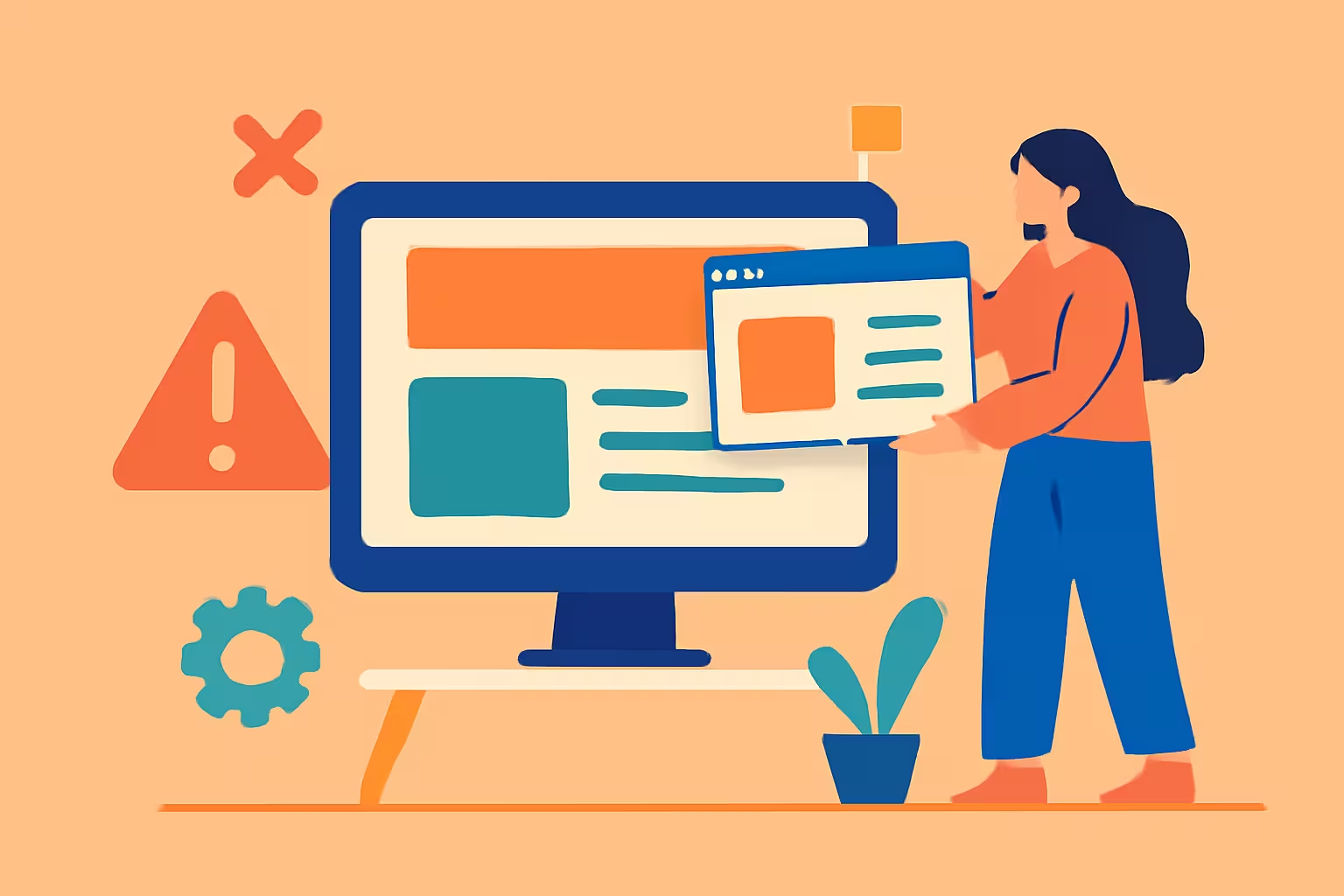Common Mistakes to Avoid When Building a Website

Building a website for your business or personal brand can be a rewarding experience, but there are common pitfalls that many beginners fall into. Here are some mistakes to avoid to ensure your website is professional, functional, and successful.
1. Not Defining Clear Goals
One of the most common mistakes people make is not setting clear goals for their website. Without a clear purpose, your website can feel unfocused and confuse your visitors.
Before building your website, ask yourself: What do I want my website to achieve? Whether it's selling products, showcasing a portfolio, or providing valuable content, knowing your goals will guide the design and functionality of your site.
2. Ignoring Mobile Users
More people browse websites on mobile devices than ever before, so it's essential that your website is mobile-friendly. A site that's not optimized for mobile can lead to a poor user experience and high bounce rates.
Make sure your site is responsive and looks great on all screen sizes, including mobile and tablets. Use tools like Google's Mobile-Friendly Test to check your site's responsiveness.
3. Choosing the Wrong Platform
Choosing the right website builder or CMS (Content Management System) can make a huge difference in how easy it is to create and manage your site. Many beginners opt for popular platforms without fully understanding the pros and cons.
For example, Wix might be great for beginners, but WordPress could offer more flexibility for those who want more control over their site in the long run. Be sure to choose the platform that aligns with your skills and future needs.
4. Not Optimizing for SEO
SEO (Search Engine Optimization) is crucial for making your website visible in search engines like Google. Without proper optimization, your site may struggle to rank, even if it has great content.
Ensure your website is optimized for SEO by using relevant keywords, adding alt text for images, and writing compelling meta descriptions. Learn more about SEO in our step-by-step guide on building a website.
5. Overloading Your Site with Content
While it's tempting to fill your site with as much content as possible, less is often more. Too much text, images, and flashy elements can overwhelm visitors and slow down your site.
Keep your design clean, and focus on providing quality content that's easy to digest. Use clear headings and short paragraphs to keep things organized.
6. Forgetting About Analytics
How do you know if your website is performing well? Without tracking analytics, it's impossible to know how many visitors you're getting, where they're coming from, and what pages they're engaging with.
Set up Google Analytics or another analytics tool to track your site's performance. Regularly review the data and make improvements based on your findings.
7. Not Backing Up Your Website
One of the most overlooked tasks is regularly backing up your website. Without backups, if anything goes wrong, you could lose all your work, content, and even the entire site.
Make sure to schedule regular backups of your website to prevent the loss of important data. Many hosting providers offer automated backup solutions to make this process easier.
8. Using Low-Quality Images
Using blurry or low-quality images can harm the visual appeal of your site. Always use high-resolution images that are optimized for faster loading times without compromising quality.
Optimize your images for the web by resizing them to the appropriate dimensions and using formats like WebP for faster loading.
9. Neglecting Website Security
Without proper security measures, your website is vulnerable to hacking. Always use HTTPS, secure passwords, and up-to-date plugins to protect your site and its users.
Implement SSL certificates, use strong passwords, and keep your site's software updated to ensure it's secure from threats.
10. Poor Navigation Structure
A confusing or poorly organized navigation menu can frustrate visitors and cause them to leave your site. Ensure that your site is easy to navigate by keeping the menu simple and logical.
Group related content together, use clear labels for menu items, and make sure that users can easily find what they're looking for with minimal clicks.